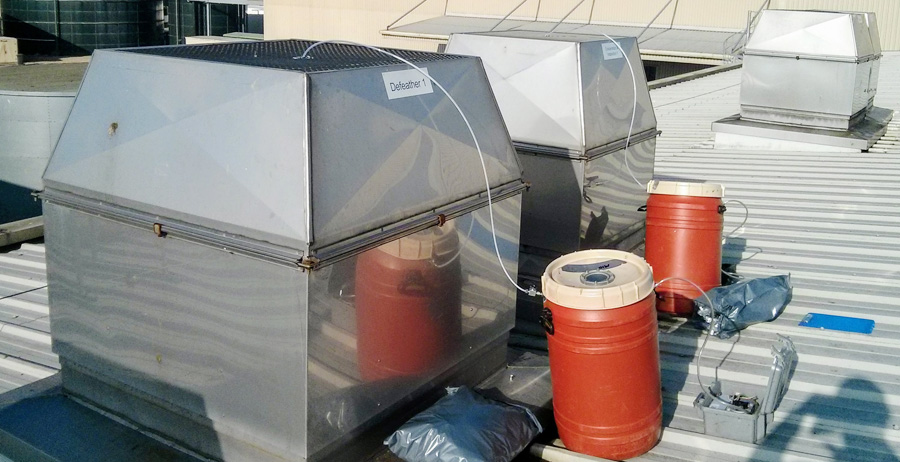How to Effectively Control Odour Emissions

Purchase and running costs of odour control equipment represent a serious impediment to the profitability of recycling and bio-energy industries. But then again, they are often the only way of ensuring that businesses operate whilst meeting permit conditions and at a low level of complaints
Before any odour control equipment is contemplated, the emphasis should be on:
- Good process design or redesign, i.e. design the problem out rather than relying on “end-of-pipe” technology to clean up afterwards.
- Good operating and management practice backed up by an environmental management system.
Containment
Generally, odours are released every time doors are open and this may mean offensive odour escaping to other boundaries.
Further emission points include accidental ventilation of buildings and storage areas, holes in the fabric of the building, poorly sealed buildings (old and new), badly located ventilation discharge points, storage tank “breathing” vents and uncovered vehicles leaving or entering the installation. Elements of good design or redesign include containing emissions by not allowing them to escape the building space.
- Containment can be achieved by using covered process equipment or lidded hoppers for raw materials. The contained odours can then be ducted to an odour control equipment without escaping the building.
- Containment of escaped odours within the building can also be achieved by eliminating unintentional holes in buildings and keeping doors and windows closed.
- Containment can also be applied to the exposed surface areas of raw materials, stores, unloading of vehicles and in handling putrescible materials.
Measuring
After containment steps have been taken, it is necessary to quantify the remaining emissions to identify the most important sources and provide quantitative design information for the odour control equipment supplier. To get this information, an odour survey will be required to measure the odour concentration of the emissions and the volume flow rate. Often a chemical analysis of the odorous compounds emitted is useful in selecting equipment. The survey will provide a characterisation of the source, most importantly the rate of emission, the exit temperature, emission height and frequency, duration and fluctuation of emission caused by variations in the process.
When the data is used with weather data and topography in a dispersion model, the impact of the measured emission on receptors can be predicted.
The input data can be changed to show how reducing each emission will in turn reduce the impact and thus indicate where the effort and money should be spent.
Odour Control
The first step when an odour control equipment becomes necessary, is to contain the high concentration odours to be treated and duct them to the equipment.
The most basic way of changing the impact of an emission, without reducing the emission from enclosed sources is by improving dispersion, using a tall stack to provide a high emission point. Provided planning permission can be obtained, this is a reliable way to reduce odour impact. For a new site include a tall stack (30m) in the planning application from the start.
Conclusion
It is important to realise that if complaints of odour from your enterprise begin and the neighbours become sensitised, they may be very difficult to stop even with the best attention to odour abatement. Therefore, begin the design process assuming there will be emissions that may cause complaints. If complaints do start, show that you are taking it seriously and make all efforts to identify and quantify the cause.
In summary, the five steps to controlling odour impact are: Avoid or Reduce Emissions from the start, Contain Emissions, Discharge Emissions at a high level, install well designed abatement equipment and finally look after this expensive investment carefully; making daily inspections and rigorous maintenance essential.

One Response
[…] the risk of your building failing to meet its air quality obligations, a proactive approach to odour control comes highly recommended. More often than not, businesses are unaware of odour leakage until it […]
Comments are closed.